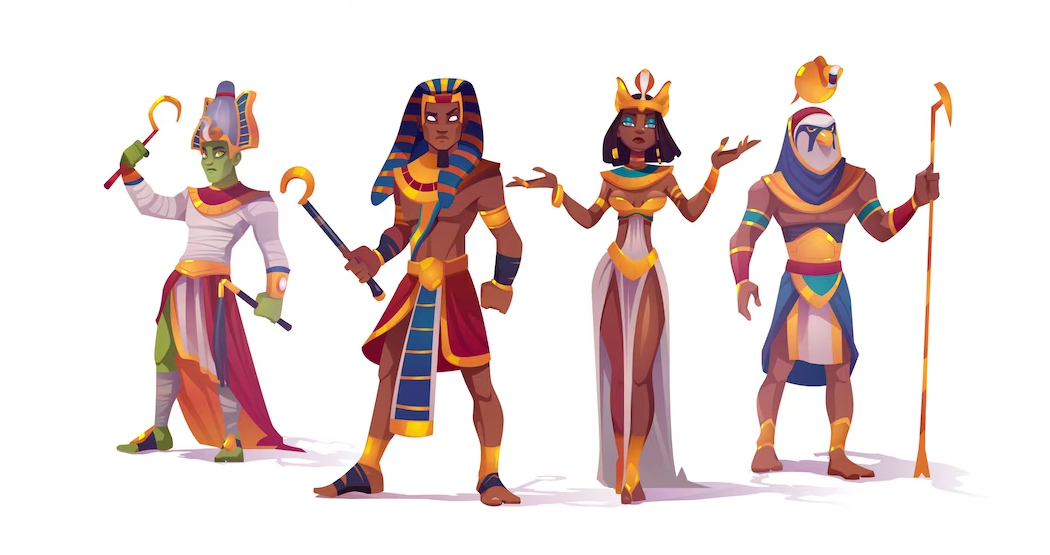
The Curse of the Pharaohs: History, Myth, and Science Explained
The curse of the pharaohs is a well-known belief that ancient Egyptian tombs are cursed, and anyone who disturbs them will suffer bad luck, illness, or death. The curse has been the subject of many books, films, and media stories, and it is often associated with the discovery of King Tutankhamun's tomb in 1922 by archaeologist Howard Carter. But what is the curse of the pharaohs, and where did it come from?
What is the Curse of the Pharaohs, and How Did It Originate?
The curse of the pharaohs is a myth that originated in the early 20th century when several people associated with the discovery of King Tutankhamun's tomb died under mysterious circumstances. This led to speculation that the tomb was cursed and that anyone who entered it would suffer a similar fate. However, the idea of a curse is not supported by scientific evidence, and most scholars consider it to be a myth.
Some historians believe that the idea of the curse was invented by the media to generate sensational headlines. Others suggest that the curse may have been a way for the ancient Egyptians to deter tomb robbers from disturbing their burial sites. Still, others believe that the idea of a curse was a way for Westerners to explain the deaths of those associated with the tomb's discovery.
How Did the Curse of the Pharaohs Affect the People Who Discovered King Tutankhamun's Tomb?
The discovery of King Tutankhamun's tomb in 1922 by archaeologist Howard Carter is perhaps the most famous example of the curse of the pharaohs. After the tomb was opened, several people associated with the discovery died under mysterious circumstances. These included Lord Carnarvon, the financial backer of the excavation, who died of an infected mosquito bite shortly after the tomb's opening.
The deaths of those associated with the tomb's discovery fueled speculation that the tomb was cursed. However, many of the deaths can be attributed to natural causes or other factors unrelated to the curse. For example, Lord Carnarvon's death was likely caused by an infected mosquito bite, and other deaths were attributed to illnesses or accidents.
What is the Scientific Explanation Behind the Curse of the Pharaohs?
Despite the popular belief in the curse of the pharaohs, there is no scientific evidence to support it. Many scholars believe that the supposed curse is nothing more than a coincidence. The idea that the tomb's discovery was followed by a series of deaths is a classic example of confirmation bias, which is the tendency to seek out information that confirms one's beliefs and ignore information that contradicts them.
There is no evidence to suggest that ancient Egyptians placed curses on their tombs. While ancient Egyptian tombs were often protected by traps and other security measures, these were intended to deter tomb robbers rather than curse them.
Are There Any Documented Cases of the Curse of the Pharaohs Affecting People in Modern Times?
While there is no evidence that the curse of the pharaohs has any basis in fact, some people still believe in its power. There have been many stories of people who have been affected by the curse, but these are usually based on coincidence or misinterpretation.
In recent years, modern technology has allowed researchers to investigate the tombs of ancient Egyptian pharaohs without the need for physical entry. In 2020, a group of researchers used ground-penetrating radar and other non-invasive techniques to scan King Tutankhamun's tomb and found no evidence of hidden chambers or curses.
How Has the Curse of the Pharaohs Impacted the Field of Archaeology?
Despite the lack of scientific evidence, the curse of the pharaohs has had a significant impact on the field of archaeology. The supposed curse captured the public's imagination and generated widespread interest in ancient Egypt and its treasures. The discovery of King Tutankhamun's tomb in 1922 by archaeologist Howard Carter was one of the most significant archaeological finds of the 20th century, and the curse surrounding it only added to its allure.
The curse also had practical implications for archaeologists working in Egypt. Many workers and laborers refused to work on excavation sites for fear of being cursed, and some archaeologists reportedly carried talismans or performed rituals to protect themselves from harm.
The legend of the curse also led to the development of strict protocols for the handling and study of human remains and artifacts, which are now considered standard practice in the field of archaeology. These protocols ensure that ancient remains are treated with respect and care, and that they are studied in a way that is both scientifically rigorous and culturally sensitive.
In recent years, the study of ancient DNA has allowed scientists to learn more about the genetic history of ancient populations, including those in Egypt. While there is no evidence to suggest that the curse of the pharaohs is real, the use of new technologies and scientific methods has allowed researchers to gain a better understanding of the lives and cultures of ancient Egyptians.
Conclusion
In conclusion, the curse of the pharaohs is a fascinating topic that has captured the public's imagination for decades. While there is no scientific evidence to support the idea of a curse, the legend has had a significant impact on the field of archaeology and the public's perception of ancient Egypt. By studying the origins and impact of the curse, we can gain a deeper understanding of the ways in which myths and legends shape our understanding of the past.
Culture Society




